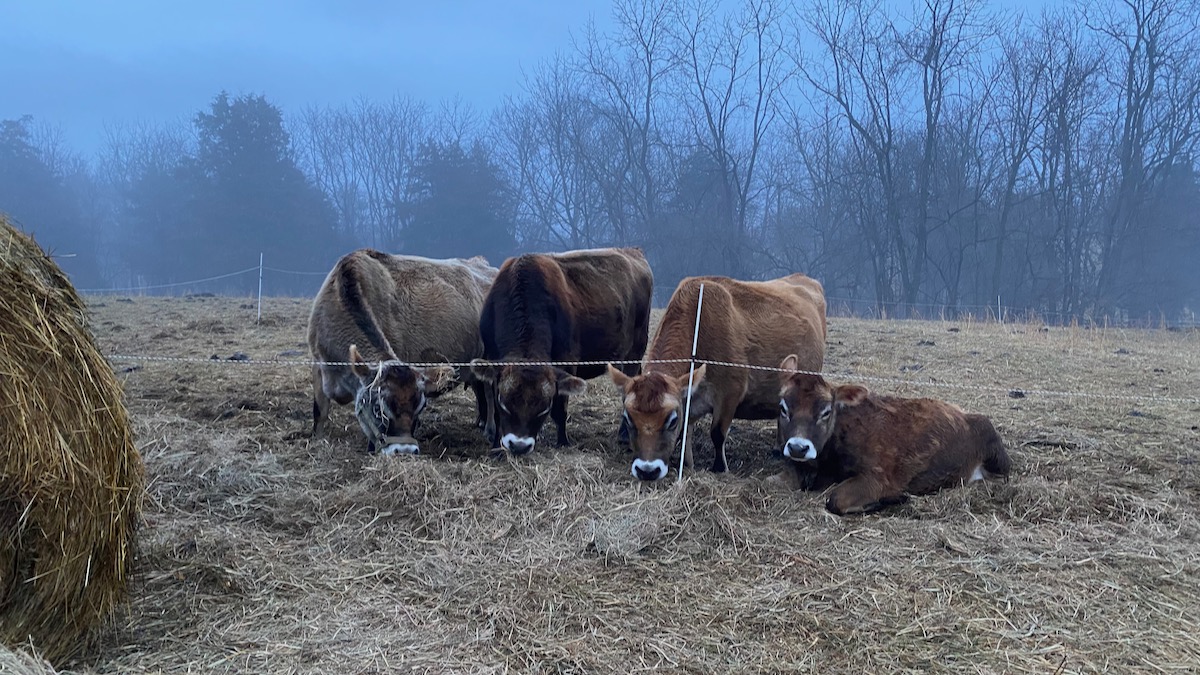
Many diseases in cattle don’t show up in any visible way. Unfortunately, it’s not as simple as looking at your beloved cow and concluding that she’s as healthy as she looks. The best way to ensure your herd is disease-free is by submitting blood or milk samples for disease testing.

How would someone go about disease testing their cattle?
The short answer is collecting blood or milk, sending it to a lab, and getting the results. Read on to learn more specifically how to submit blood samples from your cattle for disease testing.

Collecting a Blood Sample for Disease Testing
There are several places you can collect blood from, such as the tail, neck, or milk vein. The tail is the most common place to get a sample, although the jugular is more often used for calves and down cows. It is generally considered safest to collect from the tail, if possible. The tail vein is located on the underside of the tail and can be visually found and easily palpated.
Equipment:
- Gloves
- A vacutainer holder – used to hold the blood collection tube while collecting blood.
- Vacutainer needle
- Blood collection tube – red or purple top per the lab
- A secure way to restrain your cow

It’s always advisable to check with the laboratory doing the tests for their preferred sample type.
Red top: red tubes contain no anticoagulants and are used to collect blood samples for serum separation. Serum is the fluid left behind after the cells clot and are removed.
Purple top: these tubes contain ethylenediaminetetraacetic acid (EDTA) which is an anticoagulant that prevents blood clotting. These tubes are used for complete blood counts (CBCs).
If blood doesn’t flow, the needle will have to be repositioned. It’s important to preserve the vacuum in the blood tube, so always remove the blood tube from the needle before removing the needle from the vein. Once you’ve obtained your sample, be sure to securely package it in
bubble wrap with ice to ensure it is usable and doesn’t break during shipping.
Collecting the Sample:
- Restrain your cow.
- Take the vacutainer needle, holder, and blood collection tube and insert the shorter part of the vacutainer needle into the small opening at the top of the vacutainer holder and screw it in.
- Insert the blood tube up inside the holder until it just touches the needle tip. Be sure to not push the blood tube onto the needle as this will pierce the bung and release the vacuum, which renders the tube useless.
- Stand behind the cow and hold the tail straight up.
- Locate the groove, which is situated in the midline on the inside of the tail. The coccygeal vein and artery run in this groove.
- Swab the area with an antiseptic.
- Insert the needle into the midline groove at 90 degrees to the tail surface and continue to advance the needle to approximately halfway along its length.
- Push the blood tube into the needle so the needle pierces the bung. The tube should now fill with blood.
- Remove the tube when it is about two-thirds full.
- If collecting more than one sample, leave the needle and vacutainer holder in and insert the next blood tube.
- When all samples have been collected, remove the vacutainer and needle from the tail and apply pressure with gauze for 30-60 seconds.
In these photos Sarah Burton of Sabbaticus Farm demonstrates how she collects a blood sample from a cow’s tail:




Ordering Disease Testing
Results are usually expected within a few days to a few weeks depending on the type of test and the lab performing it. Some common tests performed on milk are BLV, BVD, Johne’s, Mycoplasma, Staph A, and pregnancy. Blood samples are taken for BLV, BVD, Johne’s, Neospora, Q-Fever, and pregnancy,
Labs in the USA:
- Armor Animal Health Labs
- CentralStar Lab
- Sage AG Labs
- Cornell University – AHDC
- University of MN – VDL
- WA State University – WADDL
Labs in Canada:
- National Centre for Animal Disease
- National Centre for Foreign Animal Disease
- Ottawa Animal Health Laboratory
For more information see PMJS’s Genetics, Genomics, and Disease Testing, 2024 Webinar
Source: University of Bristol Bovine Blood Sampling Tail Vein




